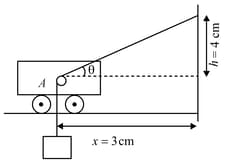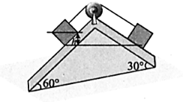In the arrangement shown in the figure, the system is in equilibrium. Mass of the block is and that of the insect clinging to block is . Pulley and string are light. The insect loses contact with the block and begins to fall. After how much time the insect and the block will have a separation between them.



Important Questions on Newton's Laws of Motion (Without Friction)
Two blocks of equal mass have been placed on two faces of a fixed wedge as shown in figure. The blocks are released from position where centre of one block is at a height above the centre of the other block. Find the time after which the centre of the two blocks will be at same horizontal level. There is no friction anywhere.
A disc of mass lies flat on a smooth horizontal table. A light string runs halfway around it as shown in figure. One end of the string is attached to a particle of mass and the other end is being pulled with a force . There is no friction between the disc and the string. Find acceleration of the end of the string to which force is being applied.
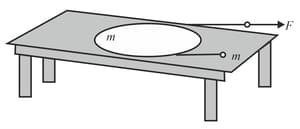

In the given figure, blocks , and of mass each have acceleration , and , respectively. and are external forces of magnitude and , respectively. Then
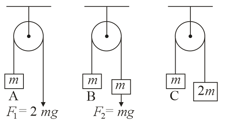
A block of mass is placed in contact with one end of a smooth tube of mass . A horizontal force acts on the tube in each case and . Then
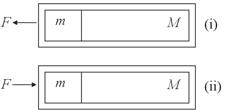
In the given figure, a man of true mass is standing on a weighing machine placed in a cabin. The cabin is joined by a string with a body of mass . Assuming no friction, and negligible mass of cabin and weighing machine, the measured mass of man is (normal force between the man and the machine is proportional to the mass)
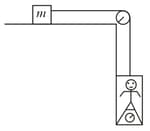
The string shown in figure passes over a small smooth pulley rigidly attached to trolley . If the speed of trolley is constant and equal to towards right, the speed and magnitude of acceleration of block at the instant shown in figure are,
